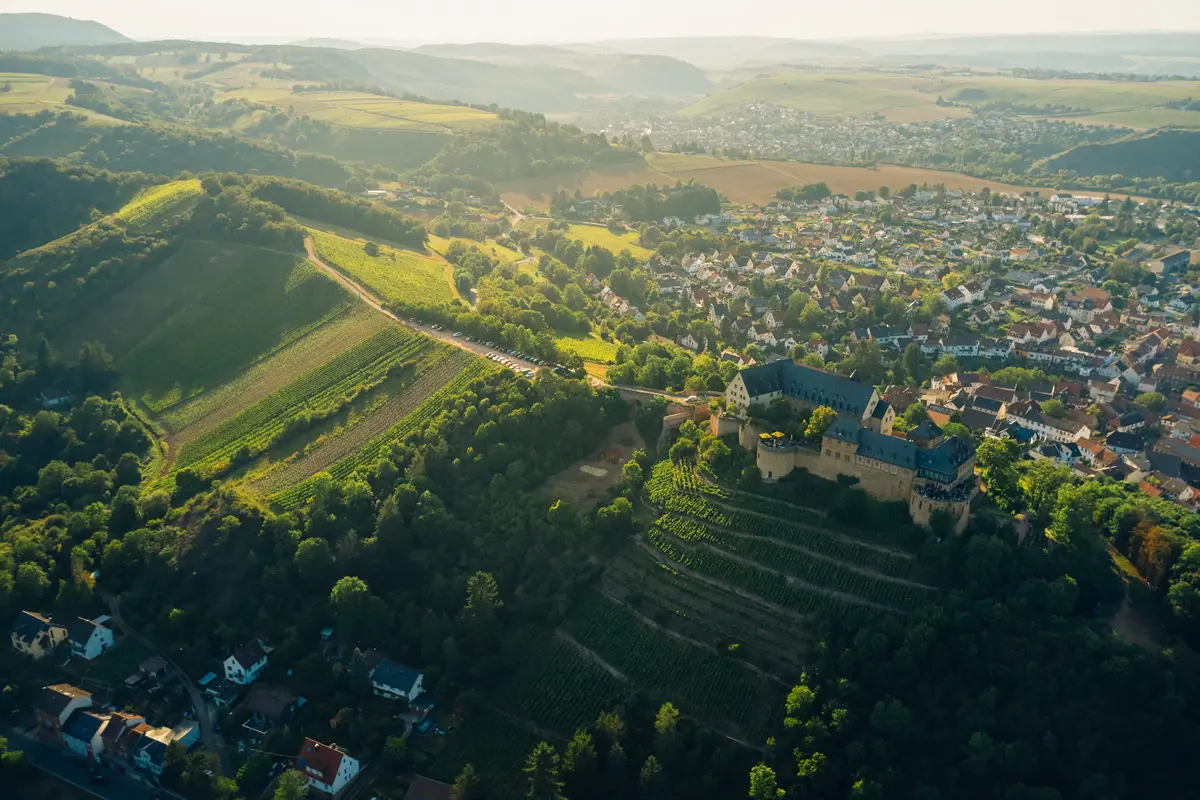The rising stars of the Nähe
Begin 2024 I had the honour of meeting Katharina Linxweiler at a tasting table. At that time she only had a few wines from the range with her; but what I tasted was so good that I immediately planned a wine trip to Nahe. Early July it was time and I was able to taste the entire range of wines at the estate. Again I was very impressed by the quality of the wines. From the basic cuvées to the more gastronomic wines and noble sweet wines; every bottle was fantastically made and offered enormous drinking pleasure. And at very accessible prices. Some time ago the estate was tipped as the most underrated estate in the region. In the meantime the estate has been put forward in the German wine guide Eichelmann as the strongest climber in the region.
Philosophy of the wine estate
Organic viticulture, careful manual work, minimal intervention during vinification and producing top-quality wines are the core values.
On the one hand, you can see this in the vineyards: buzzing insects, green ground cover, in short, a living vineyard. But in the cellar, too, Hahnmühle is very consciously occupied. All the electricity used comes from their own small hydroelectric power station. It is not without reason that the word mühle appears in the name of the domain.
In the vineyards, of course, they work certified organically. All work is done by hand; from pruning to picking. Yields are greatly reduced in order to harvest the highest quality grapes. Finally, in the cellar, they work as gently as possible: spontaneous fermentations, clarification by decantation, as little sulphite as possible, etc.
The vineyards of Hahnmühle
All vineyards of weingut Hahnmühle are located in the Alsenztal. (Not far from Bad Kreuznach) The Alsenztal belongs to the Nahe wine region.
The vineyards are among the best the Nahe has to offer. Each one is particularly steep, with gradients of up to 60%. Most of the vineyards face south-east or south-west. The soil types vary from weathered sandstone to pure slate and porphyry.
Alsenzer Elkersberg
The Alisencia Rieslings come from the Alsenz Elkersberg. The 3.0 hectare slope is oriented south-southwest and protected from the wind. The vines grow on very stony, slate-weathered soil and enjoy long exposure to sunlight. Because the Alsenzer Elkersberg site was not cultivated for many years, the name of the site is now unknown. We therefore call the Rieslings ‘Alisencia’ from this location. This is the name for the Roman settlement Alsenz. Barren and stony: a soil made for great Rieslings with a lot of minerality.
Schlossberg
Still located in the Alsenztal, at the mouth of the Alsenz in the Nahe, this beautiful steep slope rises right next to the Ebernburg near Bad Münster am Stein. Vines were probably planted here 1,100 years ago. The source rock of the Schlossberg is an upper, red-lying igneous rock, formed from liquid magma in the Permian period, about 290 million years ago. Due to its composition, this rock is called rhyolite or porphyry. On the south-southeast side you will find the stony, weathered gravel with a thickness of 80-120 cm, from which the vines absorb their nutrients. Only Riesling is grown here.
Oberndorfer Feuersteinrossel
The upper part of the Oberndorf vineyard is the Feuersteinrossel: a very stony vineyard on red sandstone weathering. Pinot Blanc, Pinot Gris and Chardonnay grow here on over 1.5 hectares. The wines from this location are delicate and have a mineral touch. Red sandstone: medium-deep, sandy clay on crumbly rocks; easy to heat, optimal supply of nutrients.
Steckweiler Mittelberg
High above the Alsenztal, on a southwest-southeast oriented hill, lies the Steckweiler Mittelberg location. Riesling, Pinot Noir, Silvaner and Pinot Gris thrive here on around 3.5 hectares. This vineyard is open to the wind and is therefore always well ventilated. This has two advantages: Firstly, there is less risk of late night frost. On the other hand, it is less susceptible to fungal diseases. Steckweiler Mittelberg: the southernmost vineyard in the Nahe cultivation area.
Climate in the Alsenz Valley
The climate in the Alsenz Valley is balanced and mild: lots of sun, little rain and frost. The vineyards face south and southwest and are protected from cold north and east winds. As a result, the estate benefits from the more than 1,900 annual hours of sunshine in the region. The climate is not only ideal for our grape varieties: orchids and various dry grasses also thrive here.

